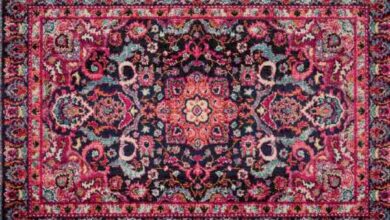Enduring Influence of Flowers on Fashion Trends Throughout History
Enduring Influence of Flowers on Fashion Trends Throughout History
Floral fashion has been a perennial favorite, with designers drawing inspiration from nature’s vibrant and diverse blooms for centuries. The delicate petals, intricate patterns, and vivid colors of flowers have not only adorned gardens but also graced the runways, leaving an indelible mark on the world of fashion. In this exploration, we will delve into the rich tapestry of history to understand how flowers have been a driving force behind trends in floral fashion. As we move forward we all know valentine’s day is coming, you can check out Valentine flowers to experience the timeless appeal of flowers and their influence on fashion.
Ancient Inspirations:
The fascination with floral patterns in fashion dates back to ancient civilizations. In ancient Egypt, Greece, and Rome, floral motifs were prevalent in clothing, representing various symbolic meanings. Egyptians adorned themselves with lotus flowers, symbolizing rebirth and regeneration. The Greeks, inspired by their connection to the gods, incorporated floral patterns like olive branches and laurel wreaths. Similarly, Romans embraced the natural world by incorporating floral elements into their attire, showcasing a harmonious blend of fashion and nature.
Renaissance and Baroque Flourish:
The Renaissance period witnessed a revival of interest in art, culture, and nature. Floral patterns became more intricate and detailed, reflecting the period’s emphasis on aesthetics. The Baroque era that followed further amplified the use of flowers in fashion, with garments adorned in elaborate floral embroidery and brocades. Flowers became a symbol of opulence and luxury, reflecting the flourishing artistic and cultural scene of the time.
Victorian Sentimentality:
The Victorian era was marked by a romantic and sentimental approach to fashion. Flowers, with their inherent symbolism, were used to convey messages of love, friendship, and even mourning. The language of flowers, known as floriography, gained popularity during this time, allowing individuals to express their emotions through the choice of blooms on their garments. Queen Victoria herself set the trend by incorporating floral elements into her wardrobe, influencing the fashion preferences of the entire era.
Art Nouveau and the Blooming Aesthetic:
In the late 19th and early 20th centuries, the Art Nouveau movement embraced natural forms, including the graceful curves and intricate details of flowers. This period saw the emergence of flowing, organic floral patterns in fashion, as exemplified by the works of artists like Alphonse Mucha. Dresses and accessories adorned with lilies, irises, and orchids captured the essence of this artistic movement, bringing a fresh and innovative approach to floral fashion.
The Floral Revolution of the 1960s:
The 1960s marked a pivotal moment in fashion history, as the youth culture rebelled against traditional norms. Flower power became a symbol of peace, love, and unity, and floral prints adorned everything from miniskirts to bell-bottom pants. The hippie movement embraced the free-spirited beauty of flowers, influencing a generation to incorporate bold and vibrant floral patterns into their clothing as a form of self-expression.
Modern Elegance and Sustainable Florals:
In contemporary fashion, floral trends continue to evolve, reflecting changing tastes and societal values. Designers draw inspiration from nature not only for aesthetic reasons but also as a response to the growing demand for sustainable and eco-friendly fashion. The use of organic fabrics and environmentally conscious practices has become intertwined with the beauty of floral motifs, creating a harmonious blend of style and sustainability.
Iconic Floral Moments in Fashion:
Throughout history, certain iconic moments have defined the fusion of fashion and flowers. From Audrey Hepburn’s timeless floral dress in “Sabrina” to Princess Diana’s unforgettable wedding bouquet, these instances have left an indelible mark on the collective memory of fashion enthusiasts worldwide. The influence of these moments continues to resonate, inspiring designers and enthusiasts alike to embrace the enduring charm of floral fashion.
Flowers have transcended mere decoration to become a powerful source of inspiration in the world of fashion. From ancient civilizations to modern runways, the beauty and symbolism of flowers have influenced trends, adding a touch of nature’s elegance to human expression. As we continue to evolve, the enduring appeal of floral fashion serves as a testament to the timeless connection between humanity and the natural world. Blooming with creativity and diversity, floral fashion remains a perennial favorite, destined to inspire generations to come.



